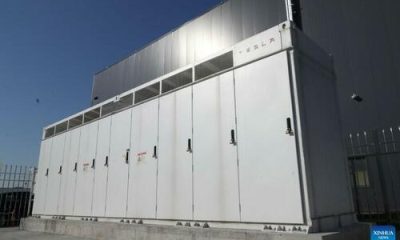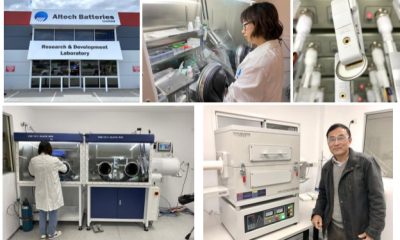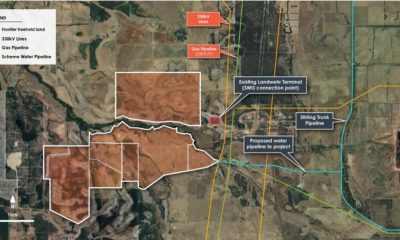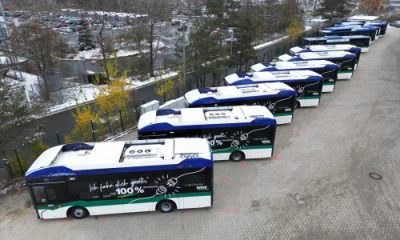Energy & Critical Metals
Wright Electric launches ultra-lightweight battery program targeting 1,000 Wh/kg pack density
Wright Electric, a developer of electric propulsion systems for regional aircraft, launched Wright Batteries, an initiative to develop batteries targeting…
Wright Electric, a developer of electric propulsion systems for regional aircraft, launched Wright Batteries, an initiative to develop batteries targeting 1,000 watt hours per kilogram (wh/kg) pack density.
Depiction of Wright battery
When I founded Wright, the best vehicle batteries had an energy density below 250 wh/kg. Now several large manufacturers are advertising cells at double that capacity, and we have visibility into new battery chemistries that could get us to our target of 1,000 wh/kg.
—Jeff Engler, CEO of Wright
Wright’s proprietary batteries would be 4x more energy dense than lithium-ion batteries that power today’s electric vehicles. Such batteries would enable the electrification of hard-to-decarbonize transportation and mining sectors—for example electric aircraft with 100 passengers.
Founded in 2016, Wright’s goal is to decarbonize the aerospace industry. Wright works with leading groups such as NASA, Y Combinator, The US Department of Energy Advanced Research Projects Agency–Energy, and the US Department of Defense.
Wright has built power dense electric motors, inverters, and generators for aerospace and defense applications. For example, Wright recently tested its electric motor to 1 megawatt and is planning for altitude testing at the NASA Electric Aircraft Testbed (NEAT).
Building on this work, Wright is now applying its expertise in lightweight mechanical and electrical systems to battery development. Since 2021, Wright has been conducting experiments with battery technologies that have been overlooked by conventional battery manufacturers. Some battery types are unsuitable for consumer electronics or grid storage, however they could be ideal for applications that require extreme light weight, safety, and compactness.
We have developed experience building lightweight thermally managed electric propulsion systems, and we see a way to apply that knowledge to the design of large molten battery packs. To cultivate a breakthrough in energy storage, we engaged four chemistry PhDs to act as scouts for promising battery chemistries. This month, we are beginning our second phase of validation experiments with the approaches that showed the most promise.
—Colin Tschida, Head of Powertrain at Wright
Wright is working with multiple academic centers and industry partners to achieve these batteries. Initial packs will be released for laboratory testing in 2025 with first rollout to aerospace and defense early adopters targeted for 2027.

Uranium Exploration Company Announces Additional Staking in the Athabasca Basin
Source: Streetwise Reports 12/22/2023
Skyharbour Resources Ltd. announced an update from its Canada-based Falcon Project along with additional…
Tesla Launches New Mega Factory Project In Shanghai, Designed To Manufacture 10,000 Megapacks Per Year
Tesla Launches New Mega Factory Project In Shanghai, Designed To Manufacture 10,000 Megapacks Per Year
Tesla has launched a new mega factory…
Giving thanks and taking stock after “a remarkable year”
An end-of-year thank you to our readers, industry colleagues and advertisers before Electric Autonomy breaks from publishing until Jan. 2
The post Giving…














